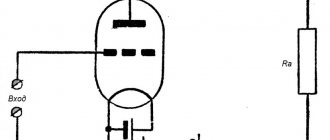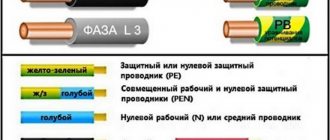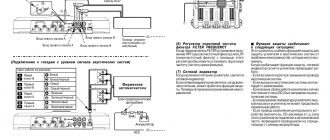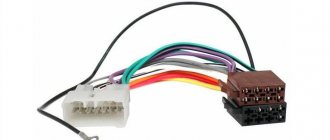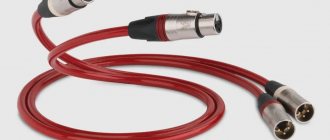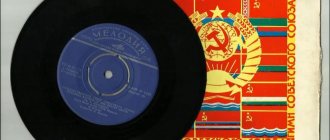Modern TV models allow you to simultaneously connect DVD players, VCRs, camcorders, game consoles, digital television decoders, and even computers to boot. All this is connected using cables, but with the development of electronic home entertainment technology, out of technical or marketing necessity, manufacturers, on our heads, have created many cables and options for their connections.
Many of the cables used to connect electronic components are very, very expensive.
Many cables, while providing excellent sound to your audio system or excellent picture to your TV, are very, very expensive. Therefore, when calculating the budget for purchasing electronics, you should not neglect the cost of cables for connecting them. Moreover, some connection methods are comparable in price to the cost of a small LCD TV. However, while talking about audio and video cables, we will not consider connecting multi-channel audio in detail in this article, since we believe that a separate article is needed for a qualitative description. So, let's begin.
Let's start with those wires that come with almost any AV device. In technology they are called by the abbreviation RCA, in everyday life we call them “tulips”. This name is not accidental, but reflects the design of the connector. The central contact is surrounded, like the petals of a bud, by a ground contact. This circuit protects the signal (central) contact from electromagnetic interference, and in science it is called coaxial (from the Latin co - together and axis - axis, that is, “coaxial”). These cables are very common and can connect interfaces of completely different quality.
RCA cables can be used to create two fundamentally different quality connections – composite and component. A composite connection uses a single RCA cable and transmits an image over it, while mixing both colors and brightness. Along with it, as a rule, an analog stereo signal, left and right channel, is supplied via two other RCA cables.
The yellow cable on the edge is a composite, but it could be any other RCA cable in the bundle, but they need to be marked somehow
For ease of connection, they, like other RCA cables, are marked with color: composite video - yellow, right audio - red, left - white. That is, when connecting, you simply look at the color of the connector on the DVD player and TV and connect them according to the color of the cable and connector. The composite + stereo connection can only be recommended as a test connection, but nothing more, especially when it comes to the cables that come with the package.
A component connection transmits video over three cables, dividing colors into two groups and separating brightness. This approach significantly improves the picture, but also increases the number of wires in the video cable to three. But improving the image is not limited to color separation, so with the increase in image quality, new interfaces had to be invented.
This 3RCA-3RCA cable is easy to distinguish by the fact that it is always marked in three colors
Some manufacturers also supply electronics with component cables, but knowing their quality, we recommend that you invest in a higher quality set of cables from reputable manufacturers. Believe me, the increase in sound and video quality will be significant. The color coding of all three wires of a component cable almost corresponds to the signals they transmit, that is, green, red and blue.
The French tried to cope with the poor quality. They made a Euro connector or in other words SCART (Syndicat des Constructeurs d'Appareils, Radiorecepteurs et Televiseurs). The developers of this connector tried to improve what had already been developed, take into account the nuances and predict the possible development of technology. They added additional capabilities to SCART, using 21 pins in the cable connector, and separated the signals, which significantly improved the image. And even now, when the diagonals have grown so much and there are more complaints about quality, this connection method still helps out quite well.
The versatility of SCART has given it a certain popularity, but not in Russia - we like simple and reliable wires
In addition to audio and video contacts, this cable still has a reserve of connectors that allow, for example, controlling a player through a TV. SCART did not take root well in Russia, but mainly due to the lack of information about it and the dominance of inexpensive eastern equipment, on which this connector was much less common than on European equipment. SCART can be considered one of the fundamental connectors in all video equipment.
Read also: Horizontal broaching machine 7510 technical specifications
For SCART cables, many different adapters have been created for other connector formats, for example, “composite + stereo audio + S-Video”
Since the beginning of the 90s, this interface has fully satisfied the needs of users, and many of the ideas of manufacturers. Be careful, not all SCART cables are created equal. In some cords, manufacturers are too lazy to make all the contacts, so in order to be guaranteed to connect all the possibilities, you need to buy only 21pin cable pinouts.
Digital Visual Interface is a digital interface used in modern monitors and modern PC video cards. This connector came to TVs with the advent of LCD panels, and replaced D-Sub. The DVI digital interface allows you to transmit a signal without distortion, but has a number of features.
Firstly, it exists in several modifications and can transmit both analog and digital video signals and mixed analog-digital ones.
The new DVI computer cable is increasingly being used in modern monitors and video cards.
Secondly, content producers, trying to protect their products from piracy, are trying to involve device manufacturers in this problem, for example, the well-known example with “zones” in DVD players. Therefore, in some DVI interfaces, depending on the design, protection technology is supported - HDCP (High-bandwidth Digital Content Protection) - a technology that checks digital keys at the source of the digital signal (digital player, computer, game console) and at the recipient (HDTV TV) or plasma panel).
You can switch from DVI to HDMI, for example, using the appropriate cable...
...or through a classic adapter
And there are also such DVI – HDMI adapters
If everything is in order with the keys, then the transmission of high-resolution audio and video data is allowed. If the digital interface on the TV does not support HDCP technology, video with extremely low resolution, or even a black screen, will be displayed on the screen. The disadvantage of the connector is that it does not transmit sound, and therefore the user will have to rack his brains to solve this problem.
There has been a lot of talk about HDMI (High Definition Multimedia Interface) connectors lately, but we will only note the main thing. HDMI gained major popularity as the best solution for connecting high-definition television. Today this is one of the most thoughtful and high-quality ways to connect equipment. And if the home theater is not planned for “one day,” then it is worth taking equipment with just such connectors.
If a DVI cable can be found and a 10-meter one...
... then for HDMI 5 meters this is already a lot
The connector is a close relative of the DVI cable, but unlike DVI, HDMI supports audio transmission. Interfaces are backward compatible. Using an adapter, you can connect these two connectors with only the loss of sound, which will have to be transmitted by a separate cable. Like DVI, HDMI supports content protection.
The high-definition 1080p standard is impossible without an HDMI cable, because a component video cable does not transmit progressive scan in this format
At the same time, the cable still remains the most expensive, and may scare off the user, but it’s worth the wait and we think prices for this type of connection will drop significantly. One of the indisputable advantages is its small size. Apparently the developers took into account the experience of the SCART connector. Already, some portable devices (for example, video cameras) are equipped with such a connector, which once again confirms its popular future.
Almost all modern flat-panel TVs have an HDMI port, and many have three.
There is true information, which is also confirmed by proposals, that HDMI cables, unlike DVI, do not work well over long lengths and after 5 meters they may not transmit a signal at all. Actually, five-meter HDMI cables cannot be found on sale, but 10-meter DVI is almost the norm, which is why installers love this format so much, for example, projection equipment, when the cable stretches to the ceiling along the walls and over long distances.
A computer interface that is becoming less and less common on TVs, as it has been replaced by the more modern DVI. Previously, the use of D-Sub in cathode-ray TVs was not rational, since these TVs were created, and are still produced, as analogue equipment, but since an LCD or plasma TV is already a digital imaging technology, then the use of D-Sub or DVI allows you to turn them into a huge computer display, or a monitor for computer games, or for accessing the Internet.
Read also: Tumbling filler otec
Good old computer D-Sub is still very common, especially on laptops
Despite the fact that the D-Sub interface is a computer interface, it is still analog, and the TV had to re-encode the signal received through it, and that is why it is now being replaced by completely digital DVI.
S-video is not a “super” video, as some are sometimes mistaken, S-video is Separate Video, that is, divided. In terms of signal transmission quality, it is in the middle between the composite interface and SCART. Using anti-interference protection like coaxial cable, it already separates brightness from color across four pins (4-pin connector), but still mixes colors.
S-Video Hi-Fi cable
This interface can be recommended as an option in a desperate situation, when one of the devices has the best interface and is not used on large diagonals, or when the source does not supply high-quality images.
So, let's get back to the pressing tasks. If your equipment is not equipped with connectors that transmit sound (HDMI, SCART), then you will still need knowledge about audio connections. And then we come across a coaxial cable again. We have already mentioned the option of connecting stereo sound with tulips. But we may still encounter a digital interface. If your TV has good quality acoustics, then you should resort to the following two methods.
And this is a 2RCA Hi-End stereo cable
Digital audio can be transmitted via digital composite audio cable, which even manufacturers often simply call coaxial, and optical. We can easily recognize composite (coaxial) by its appearance; it differs little from RCA, but its distinctive marking color is black. The advantages of this connection are obvious: from two to five channels of sound - via one cable, plus protection from interference and noise.
An optical digital cable looks extremely undignified against the background of thick top-level audio cables, but it probably works no worse than them
Strange as it may sound, we also immediately recognize the optical interface for transmitting digital audio, even if we have never seen it before - it is the only one of all the connectors that is closed with a lid, and it is also very thin, since it is actually just a piece fiber optics The digital audio signal enters the receiver in the form of a coded laser pulse, and therefore the connector is closed so that even the smallest dust does not interfere with the signal.
The cable is inexpensive, but you will have to buy it separately from the equipment; it is usually not included in the package of electronics. The cable gives you a guarantee of complete sound protection even from strong electromagnetic interference, as well as the convenience of using one cable to transmit several sound channels at once.
Description RCA
| RCA plug |
|
RCA jack or composite (also called phono connector, or CINCH/AV connector, and also colloquially “tulip”, “bell”, AV connector) is a connector standard widely used in audio and video equipment.
The big disadvantage of such connectors is that when connecting, the signal contact pair (with voltage) is connected first, and only then the housing contacts. This can cause damage to devices at the time of connection if there is a potential difference between the cases, which often happened when connecting TVs to the TV output on video cards.
A standard RCA plug (in slang for “male”) looks like a central metal protruding contact pin with a diameter of 3.2 mm (3.18 for a 0.25 inch size), an outer open length of 9.0 mm (9.52/7. 92 mm for 0.375/0.312 inch sizes), with an internal closed length of 6.0 mm (5.56 for 0.219 inch size), surrounded by a metal round rim (8.0 mm minimum inner diameter; 8.33 for 0.328 inch size). The outer diameter of the rim depends only on its thickness and is not standardized.
The RCA (slang for "female") jack, typically a panel connector that the bezel fits over, has an outer diameter of 8.0 mm (8.33 for the 0.328-inch size) and a depth of 7.50 mm (7.14 for the 0.281-inch size). ), so the rim crimping jaws must have a slightly larger internal diameter.
In inexpensive versions, the space between the connector/collet and the rim/housing (internal insulator) is filled with simple plastic or polyethylene, in mid-price ones - with textolite washers or similar ones made of pressed fiberglass, in expensive ones - with heat-resistant Teflon or ceramics.
One of the main disadvantages of inexpensive connectors is their low heat resistance. Soldering cables with a cross-section of 0.823 mm² (18 awg) or larger requires a very long warm-up time at standard solder melting temperatures of 250 ° C - or much higher temperatures of the soldering iron tip, in order to increase the cumulative heat capacity of the tip, sometimes up to 500 ° C.
Design
Many people who want to make a SCART-tulip adapter with their own hands try to understand the design of this interface.
First of all, it is worth noting that there are 20 pin contacts in this connector, and the role of the 21st contact is assigned to a specialized metal screen, which is located along the entire perimeter of this connector. Its second purpose is to protect the contacts from any mechanical influences from the outside, and the mating part is made using plastic injection. It is worth noting that it can have not only lugs for self-tapping screws and screws, but also bosses intended for installation on printed circuit boards.
The design of cable connectors of this type can hardly be called original, however, there are three main types that differ from each other in the design of the housing - the cable can be routed straight, at an angle or to the side. The connector is held in the socket by specialized spring-loaded male contacts, thanks to which even the SCART-USB adapter is famous for its incredible reliability and fastener strength
Even such cables have to be inserted quite carefully so as not to move the device.
RCA pinout
| Composite analog video—— | Composite | Yellow |
| Analog audio signal | Left/Mono | White |
| Right | Red | |
| Center | Green | |
| Left (surround) | Blue | |
| Right (surround) | Grey | |
| Left rear (surround) | Brown | |
| Right rear (surround) | Reddish brown ( tan ) | |
| Subwoofer | Purple | |
| Digital audio | S/PDIF | Orange |
| Component analog video (YPbPr) | Y | Green |
| P.B. | Blue | |
| PR | Red | |
| Component analog video/VGA (RGB/HV) | R | Red |
| G | Green | |
| B | Blue | |
| H (Horizontal Sync) / S (Composite Video Sync) | Yellow | |
| V (Vertical sync signal:) | White |
Different signals use a different connector color defined by a standard, but multichannel audio (7.1 onwards) still does not have standard colors.
If you use audio output to the TV speakers, it is converted to the left channel (white connector).
How to connect a tulip to a TV
Today, every TV is equipped with a special composite tulip connector.
Basic color signals:
- yellow – for video signal,
- white – for left audio signal or mono signal,
- red – for signal transmission, respectively, for the right channel.
Connecting a tulip to a TV is a fairly simple procedure in itself. To do this, simply connect all the tulip plugs, which are designated by colors, to the corresponding inputs on the TV.
It happens that a TV has many inputs with the same colors. In this case, follow the instructions below.
So, to connect an RCA cable, or tulip:
- We find a group on the bundle of wires, which is designated by the word IN (translated from English as “in”), this group of cables can also be designated by a symbol (two arrows);
- We find the same group on TV. It will be designated as AV2. We connect the beam to the TV;
- At the TV input we see that each of the connectors is also labeled:
- the letter "V" means video connection (i.e., image);
- the letter L indicates the left audio input;
- letter R – right audio input.
We connect the corresponding wires to the inputs.
If on the tulip you see three standard plugs - yellow, white and red, then the TV can only have two inputs - for the video signal (yellow), and only one audio. In this case, this means that the TV does not support stereo sound, but mono sound. Then you need to connect the first two cables, and simply leave the red one unconnected.
You can learn about other connections from the articles in the Technology section. For example, if you purchased a PlayStation Portable game console, but do not know how to start the game, read the article How to connect a PSP to a TV.
If you have a DVD player and you don’t know what to do with it, refer to the article How to connect a DVD to a TV.
Why is it so difficult? But why!
Unlike conventional “tulips”, the SCART RCA connector has a number of advantages that provide extensive control capabilities, better color reproduction and even digital broadcasting, unthinkable in the early 80s (it was developed in 1983).
Today, even consumers who are little educated in electronics know that the variety of colors on the screen is created by only three components: red, green and blue. Their separate supply to the color module eliminates a number of interferences and makes the picture clearer. This opportunity is provided by the SCART connector, in which the 7th, 11th and 15th pins are designed to supply an RGB signal, and the 5th, 9th and 13th, alternating with them, are intended for shielding shells.
But this is not all the capabilities that the SCART connector has. The pinout assumes the ability to automatically turn on and off the TV simultaneously with a low-frequency signal source (DVD or VCR), regardless of which company manufactured the equipment. The widescreen display mode also turns on independently.
In addition to these functions, there are two digital contacts - the 12th and 14th, prophetically identified by French engineers back in 1983, when almost all consumer electronics were analog. There is also a connector for connecting a timer, it is number ten.
So, 20 contacts and one common one (21 in total) - this turns out to be not so much. For modern entertainment video centers they are still sufficient, although they are no longer enough to enable Dolby Surround...
Article rating:
What is a scart connector on a TV Link to main publication
Related publications
How to properly connect current transformers to the meter
SCART pinout
The abbreviation SCART (Syndicat des constructeurs d”appareils radio recepteurs et televiseurs) is translated from French as “Association of the Radio and Television Industry”. The European unified connector, developed at the very beginning of the eighties, was intended for connecting various devices: a TV with a printer in the Videotext system, a keyboard in the Teletext system, VCRs, video players and Hi-Fi devices, a home computer, etc. The SCART connector is used not only in all European-made devices, but also in most Japanese devices.
Scart to HDMI adapter
If the scart connector can be converted to a tulip or S-Video, then one conductor will not be enough when implementing the same manipulation to obtain an adapter for HDMI. The fact is that HDMI is a digital interface, and analog signals come out of the scart. Therefore, the adapter must be able to convert one signal to another. Special converters are used for this, so it will be difficult to make such a device yourself. It is much easier and safer for yourself to buy a ready-made scart-HDMI adapter with a power supply. The device is implemented in a small case that easily fits in the palm of your hand, so it does not require much space to be placed on the back of the T-receiver.
Those annoying 20 contacts and ground
As a rule, the connecting cord was a cable, on one side of which there was a SCART connector, on the other, two, four or six contact groups of the American standard RCA (called “tulips” for their specific shape). At its core, it was a simple adapter that allowed for galvanic connection of the source with a video monitor (TV). Owners of video equipment often cursed, cursing the imperialists for the lack of desire for universal standardization, believing that 21 contacts for such a simple device was too many.
Only television specialists, for whom the SCART connector diagram did not constitute a “Chinese letter”, were able to appreciate the full potential of this approach on the part of the French Union of Electronics Manufacturers, in honor of which it received its name (Syndicat Des Constructeurs D'Appareils, Radiorecepteurs Et Televiseurs - SCART).
(1 rating, average 5 out of 5)
